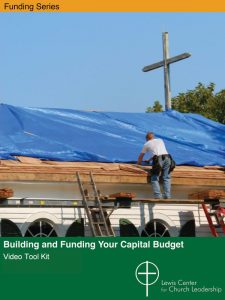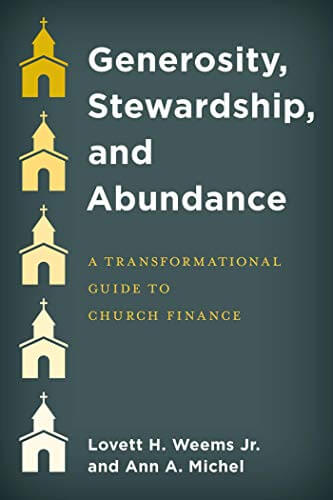Churches often struggle to determine a fair price when they rent space to community groups. Partners for Sacred Places, an organization helping congregations develop creative community partnerships, says the hard costs of maintaining any shared space is an objective factor that must be considered in determining the rental value.
To celebrate the Lewis Center’s anniversary, we are highlighting Leading Articles — some of our most popular posts of the past 20 years. We are pleased to share again this article by Partners for Sacred Places, originally published on June 5, 2019.
It’s not always easy to pin a dollar value on our places of worship. In the secular world, something’s importance depends on its market value. This is different from the way we think of sacred places. Their value is intrinsic, meaning not a matter of opinion, thereby making sacred places invaluable. Thus, we may not always feel comfortable or familiar with assigning prices to spaces within churches, mosques, and synagogues. By and large, there does not seem to be any standard system for pricing rental space in sacred places. In over a dozen interviews with congregations involved in arts partnerships, for example, no two congregations had even the same reasons for setting a rent price. Systems are often arbitrary.
But there are objective ways for finding a fair rental rate. Even though many congregations defer to market values, a shared use agreement should serve the needs of the congregation and a potential building partner before anything else. With this in mind, a great way to establish a rental price is to look at the hard costs of maintaining a building instead of relating it to questions of market value. This certainly is not the only approach, but it starts with a specific number that helps to make decisions.
What’s included?
In space sharing partnerships it is important to know from the beginning exactly what you are willing to commit to the relationship and what you want to get out of it. Being clear about what you are willing to commit sets the right expectations. Congregations worshiping in older buildings may get frustrated with their partnerships if they do not feel they are getting the help they expected to maintain their space. The congregation provides security for the building, makes necessary repairs, pays for renovations, pays the utilities bills, and oftentimes so much more. Will the congregation provide all of this as a service to their partner, or will they expect to be compensated fully for it?
Either way is fine, but it helps to know what it costs to maintain the part of the building that is slated for sharing. That dollar amount can be the difference between sacrificing and generating revenue. Before discussing a rental price, it’s critical for a congregation to know how the new revenue will bring it closer to its broader goals as an organization.
What are our costs?
Staff costs. How can a congregation estimate staff costs involved in supporting a tenant or building partner? Is there a security person that will need to let them in and out of the building? Will someone clean and maintain their space? Will a staffer help to schedule events in the space?
Take the example of a congregation staff person working at the front desk for five hours per day. If about a fifth of the people coming in and out of the building during this person’s work hours are connected with the tenant, you might attribute 20 percent of this staff expense to the rental.
Costs of maintaining the physical space. Some work done on the building might be specific to the part that houses your tenant, in which case it might make sense to include the entire bill as a cost of hosting. But some other costs, like regular boiler maintenance, might apply to the entire building.
A first step is to inventory your monthly building maintenance costs — pest control, landscaping, snow removal, security, boiler maintenance, insurance, and so on. One way to help calculate this may be to think of a unit that includes both time and space: a square foot day for instance. If the total floor area of a building is 10,000 square feet, then it has 300,000 square feet days in a month (10,000 sq. ft. x 30 days in a month).
- Measure the square feet of each room using a measuring tape or by counting ceiling tiles.
- Then multiply this by the days per week the group will have exclusive use of the space.
- Then simply multiply this figure by the cost of maintaining a square foot for a day.
With this method you can see what it costs to maintain a square foot of your building for a day. Having a figure like this can be helpful, because if your building users ask to use more space on more days, you can simply add square foot days to have a sense of what it costs the congregation.
Utilities. Utility costs might be the most difficult to estimate. Although there are ways to find out what a tenant’s share of building use might be, the congregation might not know what it costs to heat or cool certain rooms since so many sacred places do not have zoned heating or cooling systems. It’s either all on or all off. The Interfaith Coalition on Energy’s “How to Determine Energy Costs for Rented Space” may be the best way to estimate utilities costs. Another option is to bring in a professional.
Taxes. Always consult a tax expert about the consequences of new programs, collaborations, or space-sharing agreements that could subject your organization to business income or property taxes. Additionally, consult a lawyer with knowledge of federal, state, and local tax law as well as space-sharing agreements and covenants — preferably a real estate and tax attorney. Attempt to protect tax-exempt status with an accurate but carefully worded space-sharing agreement. Our research thus far has shown that a church’s tax-exempt status is not ill affected by charging rent for its facilities. The partnership is stronger and thus the tax-exempt status is more secure when a sacred place can link its mission and ministries to their space sharing partner’s mission and outreach.
Once you feel you have totaled all the costs in hosting your partner, you have a good starting point to calculate a rental price. Each side can be more certain that the other is acting in good faith.
This material is adapted from the free download Making Homes for the Arts in Sacred Places: A Training Manual for Forging Sustainable Partnerships Between Congregations and Arts Groups written by Karen DiLossi, Director of Arts in Sacred Places for Partners for Sacred Places. Used by permission.
 Related Resources
Related Resources
- Building and Funding Your Capital Budget, a Lewis Center video tool kit resource
- Using Your Building Assets by Rosario Picardo
- From Parking Lot to Pew: Turning Building Users into Worshipers by Phil Schroeder







